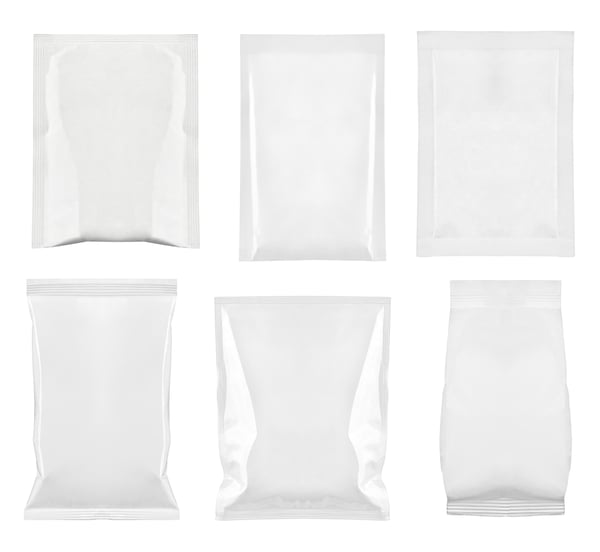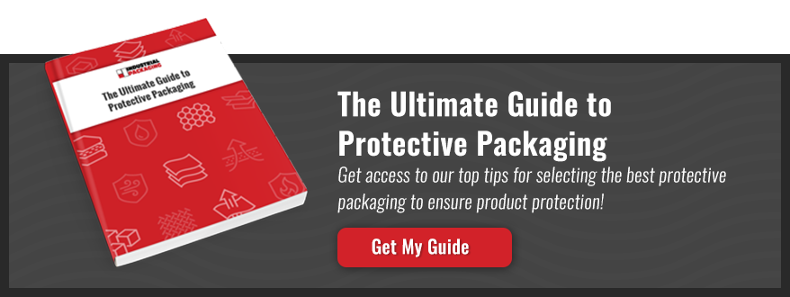The Top 6 Tamper Evident Packaging Materials: Types, Uses, & Benefits.
Packaging Materials | The Business of Packaging | Food Packaging
If you have products that require protection such as supplements and pharmaceuticals, tamper-evident packaging materials are a must-have for your business. From induction seals to shrink bands, there are many different types of tamper-evident packaging materials. Working with tamper-evident packaging materials and helping people to choose the right option for their products is a long-running tradition here at Industrial Packaging.
We will take a look at the top six tamper-evident packaging materials and discuss the use, application, and benefits of each. Our goal with this article is to teach you about your options for tamper-evident packaging so that you can choose the right material for your products.
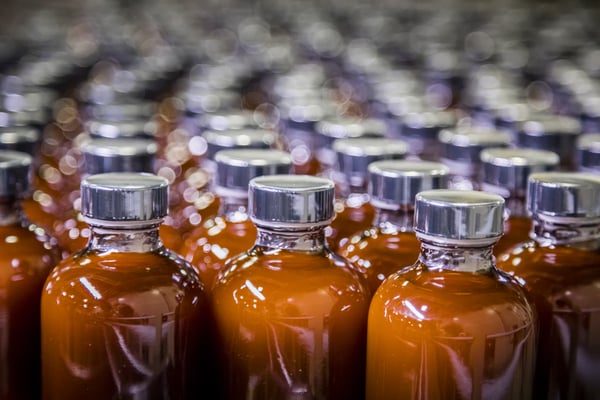
1. Shrink Bands
Shrink bands (AKA seal bands) are one of many types of protective packaging and are tamper-evident materials created from plastic. They are small sleeves of shrink film that are shrunk around product containers. Shrink bands are sometimes perforated to be user-friendly. Shrink bands match the specific size of the top of a container. You typically find these around the cap for products such as pill bottles, pickle jars, eye-droppers, essential oil containers, cough medicine, and other similar products.
Essentially, a shrink band is a ring made from soft plastic. The ring is put around the product's cap. Next, heat is applied on the ring resulting in uniform shrinking of the ring around the lid. This process is generally carried out with a heating element such as a heat tunnel or heat gun.
Shrink bands are an excellent example of tamper-evident packaging supplies. If products using a shrink band are tampered with or damaged, the shrink band shows that the product has been compromised. Perforated shrink bands have a better end-user experience because of less potential for wrap-rage.
One second, what is wrap-rage?
From Wikipedia:
"Wrap rage, also called package rage, is the common name for heightened levels of anger and frustration resulting from the inability to open packaging, particularly some heat-sealed plastic blister packs and clamshells. People can be injured while opening difficult packaging: cutting tools pose a sharp hazard to the person opening the package, as well as its contents. Easy-opening systems are available to improve package-opening convenience"
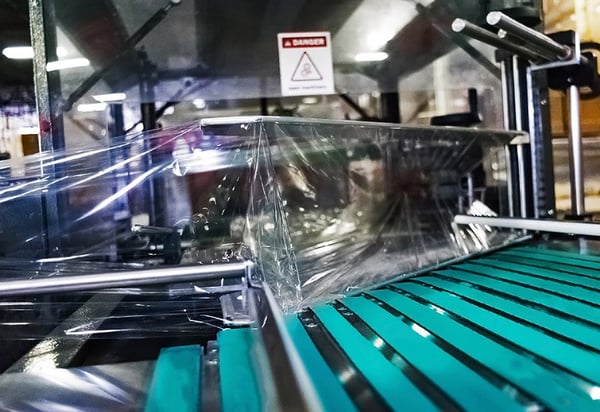
2. Over Wrap
Over wraps are pieces of plastic film that have been wrapped around a product and sealed with heat or adhesives. For example, the cellophane plastic covering on a pack of cigarettes is an application of over-wrapping used on various products. Over-wrapping gives the product an air of cleanliness, protection, and quality. Over wraps also provide an opportunity for branding because they can be printed on with multiple colors, text, and visual components for branding purposes.
Over-wrapping differs from shrink film in that the over-wrap is wrapped around the product. After over wrap is placed around your product, the flaps of the plastic are tucked and sealed by a machine. Shrink film, on the other hand, is plastic that shrinks to form around the product packaged via exposure to a heating element such as a shrink tunnel.
3. Lidding Films
Lidding films have been a staple of tamper-evident packaging for quite some time now. If you have ever eaten yogurt, or bought over the counter pain medication, chances are, you removed a lidding film before consumption of the item inside the container.
Lidding films are plastic, metal, or bio-based materials used on a ton of different products where freshness is essential. For example, when you buy a tub of yogurt after you remove the plastic lid, there is usually a lidding film made from aluminum underneath.
It is sealed around the edges and is removed by pulling a tab. The tab protrudes out from the lid. Peeling the tab back generally results in the cap being removed from the container. That being said, sometimes the tab will come off and result in you having to find more creative ways to remove the lidding. This can frustrate your customer and may cause them to feel a sense of wrap-rage.
Some forms of lidding films use MAP (modified atmosphere packaging) to keep your products fresh for as long as possible. You see MAP applications in lidding films primarily for meat, poultry, fish, and vegetables.
Need Help Choosing Protective Packaging?
4. Resealable Stand Up Pouches With Tear Away Lids
Stand up pouches first made a splash in the B2C market way back in the 80s/90s with an obvious shelf appeal for the famous Capri-sun brand of drinks for kids. Since then, they have come a long way and are fast becoming the chosen flexible packaging material for countless products for thousands of brands. Today you can find everything from industrial hemp to granola, from candy to toys and millions of other items in between packaged in resealable pouches.
The meteoric rise of popularity for resealable stand-up pouches stems from being easily branded with vivid color and design aesthetics and helps, save money because of less shelf space. From an environmentally conscious perspective, stand up pouches take up less space in landfills - and are one of the most environmentally friendly materials currently available. Furthermore, they can be resealed after initially opened. These pouches have become wide-spread across various product lines, and this can be seen by browsing your local supermarket.
There are also child proof resealable pouches that are used in pharmaceutical applications as well as medical marijuana dispensaries. In this respect, resealable pouches have a vast and varied selection of potential applications for countless products throughout multiple different markets.
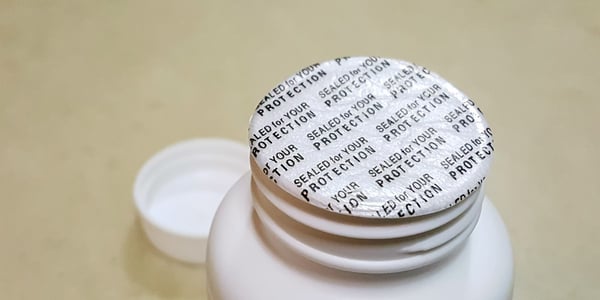
5. Induction Seals
Induction seals are packaging supplies made from induction heating thermo-plastic materials. You will commonly find induction seals on the inside of pill bottles. Generally speaking, it will be a multiple material lid (most often aluminum, wax, paper pulp, and plastic) with a piece of plastic protruding from the top, which is meant to be gripped and pulled to remove the seal from the bottle.
These seals are most commonly found on drug, food and liquid containers and for items which have a long shelf life. Induction seals act as a tamper-evident substrate which, if torn, alerts the consumer to the potential tampering or damage to the product before them consuming it.
Induction seals help to keep your product from leaking, preserve freshness, alert you to tampering and produce an all-around better product. They are commonly found on millions of products and can be used for various types of applications for perishable items.
6. Tamper Evident Tape
Tamper evident tape utilizes a security seal for shipping pallets, boxes, crates, and various other types of containers. Once you have applied this tape to a surface, it cannot be removed without triggering tamper evidence. The tamper-evident tape will leave a message behind such as "open" or "void" on the remaining tape after attempted removal.

Sourcing Tamper Evident Packaging
Well, folks, these are the top six tamper-evident packaging materials and their uses. If you did not find a material here that you had expected to be on the list, please reach out to us! It is very likely that we will be able to help you with your packaging needs or point you in the right direction to a solution.
When sourcing tamper-evident packaging materials, it is suggested that you research the different types available and work with a local packaging expert to identify the best possible material for your specific needs. Depending on the products that you will be packaging, there may be many different tamper evident materials that would work for your needs.
About Nathan Dube
As the Digital Marketing Specialist at Industrial Packaging, I am honored to create content for such a phenomenal company and work with one of the greatest teams in the Packaging Industry. Whether creating a video, writing blog posts or generating other pieces of content and multimedia, I am always excited to help educate and inspire our prospects and clients to reach their highest potential in regards to their packaging processes and needs.




